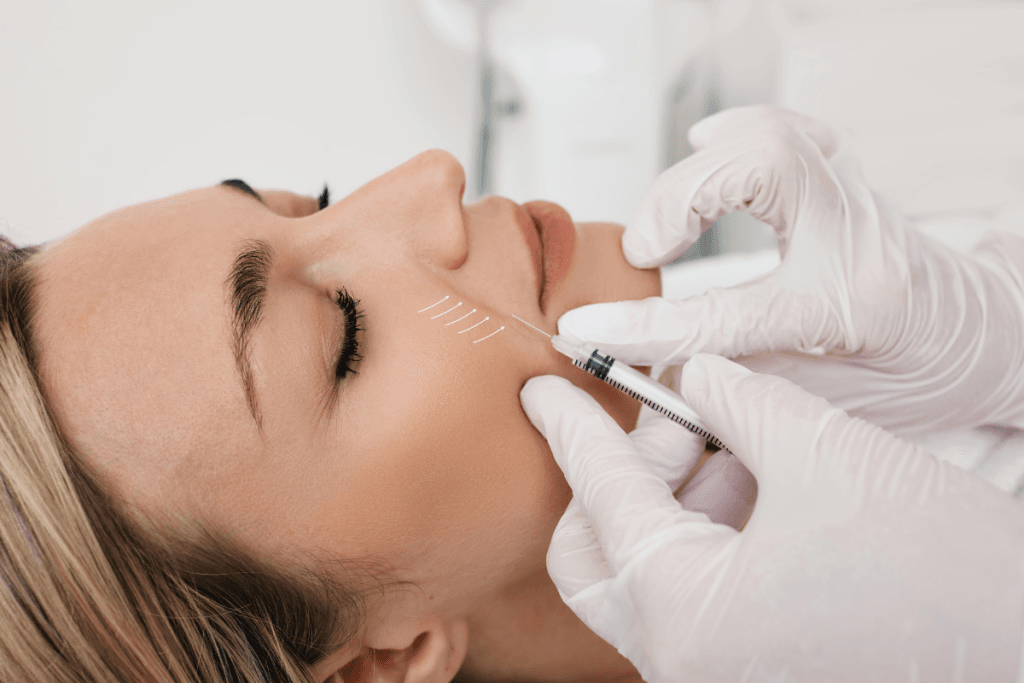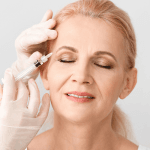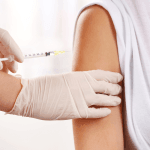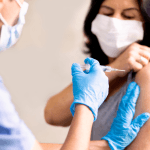Global demand for collagen biostimulators is growing rapidly, with the medical aesthetics market projected to exceed USD 35.3 billion by 2030. One of the driving forces behind this surge is the shift toward regenerative injectables that not only fill but also stimulate the body’s natural collagen production. Among these advanced solutions, Ultracol injection has established itself as a trusted choice for long-term skin rejuvenation.
Formulated to activate dermal regeneration and restore skin structure from within, Ultracol delivers results that outlast many traditional fillers. For practitioners, it represents a modern approach, one that merges patient satisfaction with predictable, sustained outcomes.
Let’s explore what Ultracol offers, its mechanism, formulation options, clinical applications, and what professionals should know before integrating it into their practice.
What Is Ultracol?
Ultracol injection is a collagen-stimulating injectable designed to improve skin elasticity, texture, and volume by encouraging the body’s own regenerative response. Unlike hyaluronic acid fillers that focus on immediate volume replacement, Ultracol provides progressive rejuvenation by stimulating fibroblasts to produce new collagen.
Clinically, this process enhances dermal structure and reduces fine lines, sagging, and volume loss over time. It belongs to a category of biocompatible and biodegradable products, making it a safe and long-lasting option for patients seeking natural, gradual improvements.
Professionals regard it as a hybrid product, bridging the gap between temporary fillers and long-term regenerative therapies.
Composition and Mechanism of Action
The primary component in Ultracol injection is poly-D,L-lactic acid (PDLLA), a synthetic biocompatible polymer widely used in medical applications such as sutures and orthopedic implants. When injected into the dermis, PDLLA microspheres stimulate the skin’s natural repair process.
Here’s how it works:
- Initial Phase (Weeks 1–4): The carrier gel provides subtle volume correction immediately after injection.
- Stimulation Phase (Weeks 4–12): PDLLA particles activate fibroblast activity, boosting collagen synthesis.
- Regeneration Phase (Months 3–12): As new collagen forms, the gel gradually resorbs, leaving behind firmer, more elastic skin.
This process makes Ultracol a biostimulatory injectable, rather than a conventional filler —a key distinction for practitioners aiming for sustained aesthetic outcomes.
Product Range and Strength Options
Ultracol is available in several formulations designed to match different treatment indications and target areas.
Ultracol 200
Ultracol 200 is formulated for deeper tissue correction, making it ideal for volume restoration in the midface, temples, and jawline. Its dense particle composition ensures stability and longer-lasting results in areas requiring structural support.
Ultracol Under Eye
Specifically developed for delicate areas, Ultracol under-eye targets dark circles, hollowness, and fine wrinkles around the orbital region. Its smaller particle size allows smooth integration without overcorrection or lump formation, which is critical in thin, sensitive tissue.
Standard Ultracol and Combination Use
Practitioners often use Ultracol alongside other modalities such as hyaluronic acid fillers or energy-based devices (like radiofrequency or ultrasound). This combination approach enhances collagen remodeling and boosts the longevity of results.
Clinical Benefits of Ultracol Injection
From a medical and business perspective, Ultracol injection provides several advantages that align with current trends in aesthetic medicine.
Long-Lasting Collagen Stimulation
While traditional hyaluronic acid fillers degrade over time, Ultracol’s mechanism promotes endogenous collagen synthesis, extending visible improvements for up to two years depending on patient factors.
Natural, Gradual Results
Because results develop progressively, patients experience a natural rejuvenation effect rather than sudden volume changes, which is ideal for those seeking subtle enhancements.
Biocompatibility and Safety
PDLLA has been extensively studied and found to be biocompatible and biodegradable, minimizing the risk of inflammatory reactions or nodules when injected correctly.
Versatile Application Areas
Ultracol can be used in multiple areas, including:
- Cheeks and temples
- Jawline and chin
- Under-eye region
- Nasolabial folds
- Marionette lines
- Neck and décolleté
This versatility makes it a valuable addition to any aesthetic clinic’s injectables portfolio.
Treatment Protocols and Application
In order to achieve optimal results with PDLLA treatments, understanding the treatment protocols and application processes is essential. Here are the key components to consider:
Preparation and Reconstitution
Before administration, the PDLLA powder must be reconstituted with sterile water for injection. The dilution ratio varies based on the treatment area and desired effect, but proper hydration of particles ensures smoother injection and consistent collagen stimulation.
Injection Technique
Ultracol can be administered via a fan, linear threading, or cross-hatching technique, depending on the area treated. Depth of injection generally ranges from mid to deep dermis.
It’s worth noting that practitioners should have advanced anatomical knowledge and proper training to optimize outcomes and minimize complications.
Post-Treatment Care
Patients are advised to:
- Massage treated areas gently for several days to evenly distribute the product.
- Avoid heat exposure and strenuous exercise for 24–48 hours.
- Stay hydrated to support tissue regeneration.
Results typically appear gradually over 6–12 weeks, with continued improvement for several months.
Before and After Results
Clinicians often highlight the Ultracol before and after effect as one of its strongest selling points. Patients observe:
- Improved skin firmness and elasticity
- Reduction in fine lines and folds
- Enhanced facial volume and contour definition
- Brighter, smoother skin tone
When compared to standard dermal fillers, the results are less about “filling” and more about regenerating. This distinction appeals to professionals emphasizing natural, tissue-friendly rejuvenation techniques.
Safety Considerations and Contraindications
Like any injectable, Ultracol must be used under proper clinical protocols to ensure patient safety. Common temporary side effects include mild redness, swelling, or tenderness at the injection site.
However, practitioners must be aware of Ultracol contraindications, which include:
- Pregnancy or breastfeeding
- Active skin infections or inflammation in the target area
- History of autoimmune disorders or hypersensitivity to ingredients
- Bleeding disorders or use of anticoagulants
Proper screening and informed consent are essential prior to treatment.
Duration and Maintenance
Clinical experience shows effects can persist for up to 24 months, depending on the patient’s metabolism, age, and lifestyle.
To maintain results, practitioners typically recommend a series of 2–3 sessions, spaced 4–6 weeks apart, followed by annual maintenance treatments.
This long-term performance differentiates Ultracol from many temporary fillers and supports better retention rates in patient follow-ups.
Market Availability and Pricing
Clinics evaluating this injectable should consider both accessibility and cost efficiency. The Ultracol price varies by region and formulation, but it generally offers a competitive advantage compared to similar collagen stimulators like Sculptra.
For bulk purchasing, authorized distributors allow clinics to buy Ultracol in larger quantities, which helps maintain a consistent supply while optimizing profit margins.
Professional Insights and Industry Feedback
Practitioners who’ve integrated Ultracol into their services frequently highlight three main strengths:
- Consistency: Predictable biostimulation response across different skin types.
- Longevity: Fewer touch-ups required, reducing patient downtime.
- Market Appeal: Growing patient preference for regenerative aesthetics over traditional filler procedures.
Aesthetics professionals find Ultracol’s results align with the broader trend toward collagen banking, a preventive approach where younger patients begin early rejuvenation to delay visible aging.
Take Your Next Step
If your clinic aims to expand into regenerative injectables, consider incorporating Ultracol injection into your offerings. Partner with a verified distributor or authorized supplier to ensure product quality, clinician support, and optimal pricing for bulk purchases.
Deliver natural, long-lasting rejuvenation, and stay ahead in the ever-evolving landscape of professional aesthetic treatments. Visit our Ultracol Product Page to learn more about its availability and purchase options online.
Takeaways
For professionals seeking a long-lasting skin rejuvenation solution, Ultracol injection provides an evidence-based, versatile, and profitable option. Its ability to promote natural collagen regeneration, coupled with excellent safety and adaptability, makes it a valuable addition to aesthetic portfolios.
Whether used for under-eye concerns, facial contouring, or full-face rejuvenation, the treatment offers durable outcomes and growing patient satisfaction. As with any advanced biostimulator, training, product sourcing, and patient education remain key to consistent results.
Clinics sourcing directly through verified channels can ensure authentic supply and competitive price points, essential for maintaining both safety and profitability.
Frequently Asked Questions (FAQs)
Is Ultracol a Filler?
The answer is no, and understanding this difference is vital for practitioners. Ultracol belongs to the biostimulator class of injectables. Unlike fillers that provide immediate volume by physically occupying space, Ultracol acts as a scaffold that stimulates new collagen production, which gradually replaces the injected material as it dissolves.
How long does Ultracol last?
Clinical experience shows that Ultracol results can persist for up to 18–24 months, depending on the formulation used and individual patient factors. Maximal collagen remodeling typically develops over 3–6 months, with continued improvement thereafter. Maintenance protocols (one annual touch-up in many practices) help preserve outcomes long term.
What are Ultracol contraindications?
Contraindications include pregnancy and breastfeeding, active infection or inflammation at the treatment site, known hypersensitivity to any component, and certain autoimmune or granulomatous disorders. Patients on anticoagulation should be assessed carefully for bleeding risk prior to treatment. Proper screening and informed consent are essential to minimize adverse events.
What should clinicians expect in Ultracol before and after results?
Before-and-after outcomes generally show gradual improvement in skin texture, reduced fine lines, and better facial contour definition over several months. Immediate post-injection changes are subtle, and peak results appear as new collagen forms, usually between 3–6 months. Standardized photography and objective scoring (e.g., skin elasticity measures) help document and communicate results to patients.






